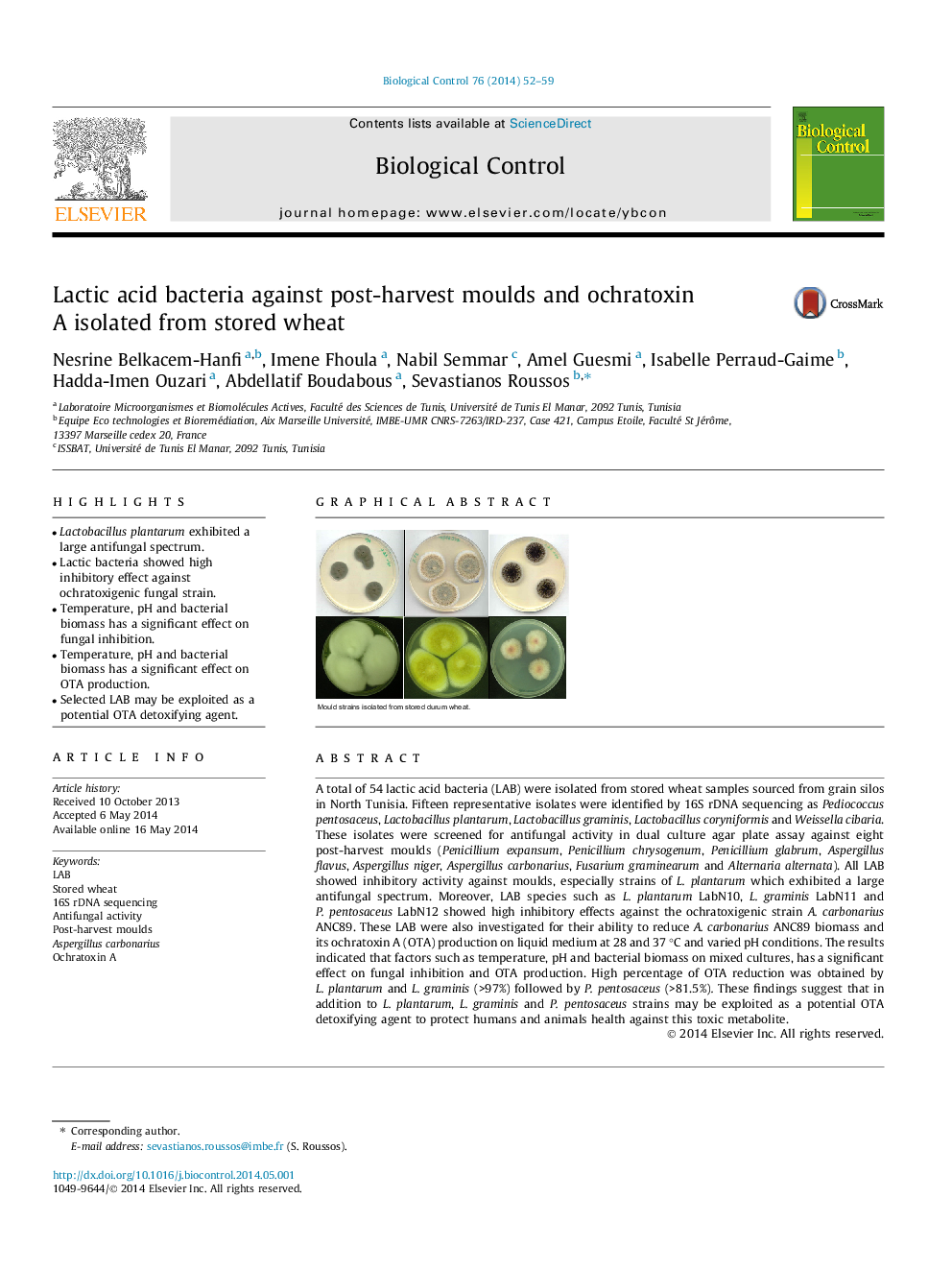| کد مقاله | کد نشریه | سال انتشار | مقاله انگلیسی | نسخه تمام متن |
|---|---|---|---|---|
| 4503883 | 1624258 | 2014 | 8 صفحه PDF | دانلود رایگان |
• Lactobacillus plantarum exhibited a large antifungal spectrum.
• Lactic bacteria showed high inhibitory effect against ochratoxigenic fungal strain.
• Temperature, pH and bacterial biomass has a significant effect on fungal inhibition.
• Temperature, pH and bacterial biomass has a significant effect on OTA production.
• Selected LAB may be exploited as a potential OTA detoxifying agent.
A total of 54 lactic acid bacteria (LAB) were isolated from stored wheat samples sourced from grain silos in North Tunisia. Fifteen representative isolates were identified by 16S rDNA sequencing as Pediococcus pentosaceus, Lactobacillus plantarum, Lactobacillus graminis, Lactobacillus coryniformis and Weissella cibaria. These isolates were screened for antifungal activity in dual culture agar plate assay against eight post-harvest moulds (Penicillium expansum, Penicillium chrysogenum, Penicillium glabrum, Aspergillus flavus, Aspergillus niger, Aspergillus carbonarius, Fusarium graminearum and Alternaria alternata). All LAB showed inhibitory activity against moulds, especially strains of L. plantarum which exhibited a large antifungal spectrum. Moreover, LAB species such as L. plantarum LabN10, L. graminis LabN11 and P. pentosaceus LabN12 showed high inhibitory effects against the ochratoxigenic strain A. carbonarius ANC89. These LAB were also investigated for their ability to reduce A. carbonarius ANC89 biomass and its ochratoxin A (OTA) production on liquid medium at 28 and 37 °C and varied pH conditions. The results indicated that factors such as temperature, pH and bacterial biomass on mixed cultures, has a significant effect on fungal inhibition and OTA production. High percentage of OTA reduction was obtained by L. plantarum and L. graminis (>97%) followed by P. pentosaceus (>81.5%). These findings suggest that in addition to L. plantarum, L. graminis and P. pentosaceus strains may be exploited as a potential OTA detoxifying agent to protect humans and animals health against this toxic metabolite.
Mould strains isolated from stored durum wheat.Figure optionsDownload as PowerPoint slide
Journal: Biological Control - Volume 76, September 2014, Pages 52–59
